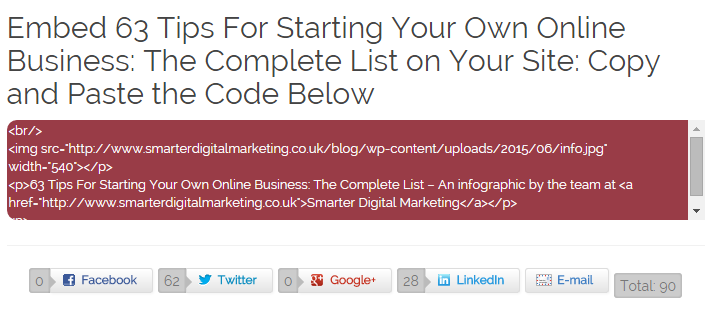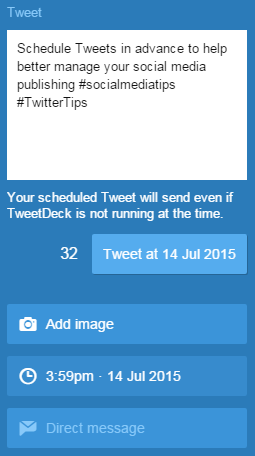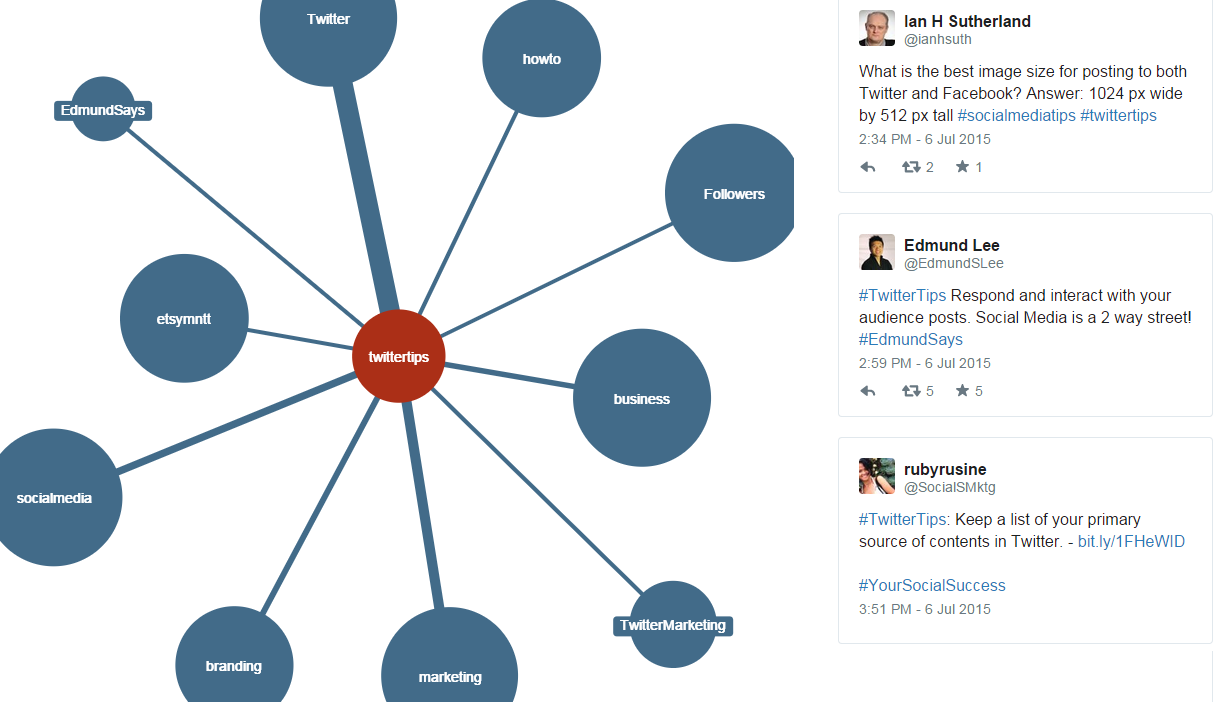The effective use of social media websites can increase traffic to your website, improve engagement with our potential visitors, and help develop a community of loyal brand ambassadors.
Most businesses and website owners have come round to the idea that social media marketing certainly has its benefits, but apart from setting up a few profiles and posting the occasional Tweet, few take it that seriously.
[Tweet “10 simple social media tips that will make a difference…”]Fortunately, managing your social media community doesn’t have to take up the whole of your working week, and by intelligently investing a few hours a week, it is possible to see significant gains over time.
It does take time to build up a following, and to start seeing the positive results in your website analytics and revenue metrics, but it is worth sticking with it.
1 – Make Sharing Simple
While you can do a lot of social media marketing work yourself, the most effective campaigns are those that utilise social media followers and website visitors.
Not only does this require less time and work on your part, but it will increase the likelihood of your message gathering momentum and your marketing going viral.
Compelling, helpful, and informative content has the greatest appeal so it is important that you put time and effort, or resources, into creating high quality content.
Ensure there are no obstacles to sharing on your website. Whatever content platform you use, whether it is WordPress or any other, there are plugins and add-ons such as ShareThis or AddThis that enable you to include share buttons, like buttons, and other social media engagement buttons.
By providing these tools, you reduce the effort and increase the likelihood that your visitors will share your high quality content for you.
 Social Share icons like these are easy to set up on blog CMS’s such as WordPress
Social Share icons like these are easy to set up on blog CMS’s such as WordPress
2 – Complete and Update Your Bio
From your avatar to your interests, your profile or bio is important. It should be concise and accurate, convey the most important message that you want to get across, and it should meet the requirements of the site on which it appears.
Blank profiles, default avatars, and missing or inaccurate information will put some of your potential followers off.
Avoid the temptation to fill profile fields with too much thinly veiled marketing. You might be increasing your social media efforts in a bid to market your site, but you will put users off if all they see is ad after ad after ad.
Your avatar is usually the first thing that a potential follower will see. Most social media websites are personal, so consider using a photo of yourself rather than a company logo or other corporate image.
The possible exception to this is if you are setting up a company page or company profile, but even thee profiles can benefit from the use of a personal profile picture.
Regularly update and check the validity of your profiles. Information can become outdated, social sites add new fields, and if you already have a number of profiles established then you may not have completed them when you signed up.
3 – Businesses Should Be On LinkedIn
LinkedIn should be an integral part of your social media campaign if you are a business.
Even if you are an individual website owner or entrepreneur, it offers numerous opportunities to increase the size of your network, to improve exposure, and to enjoy new sales opportunities.
Publishing on Pulse, participating in Groups, and setting up an appealing company page can help to further extend your reach on LinkedIn.
As we said in the last section, don’t forget to optimise your profile. Take a look at how to optimise your LInkedIn company page.
4 – Trim Your Social Media Portfolio
While targeting a single social networking or social media publishing website might be considered too light, setting up profiles on every site you can find could damage your marketing efforts, especially if you try and update them all regularly.
Social media is all about being social. You should be listening, as well as publishing, and you should be developing and forging powerful relationships rather than sticking up a generic profile and hoping that this makes a difference to your marketing campaign.
Have an exit strategy for your profiles, so even if you’ve invested hours a week into a site, if it isn’t showing results, be prepared to walk away if your improvements don’t make a difference.
 Does your company need to use seven social media networks? Identify what your customers use, and focus on that
Does your company need to use seven social media networks? Identify what your customers use, and focus on that
There are many more social media sites to try, including those that concentrate on media sharing as well as those that encourage communication between members.
If you have profiles that you don’t update, consider closing them, and try to put greater efforts into a relatively small number of sites.
5 – Develop A Social Media Content Calendar
Content management can be a challenge, and especially if you don’t have any schedule in place.
Creating a social media content calendar means that your efforts are targeted, and you should find it easier to find inspiration if your content is planned well in advance.
Do allow some room for freedom. You can’t, for example, legislate for breaking news stories or major events within your own organisation, but these can provide you with excellent content for your own site and blog, as well as for repurposing on your social media profiles and updates.
Publishing your content calendar can help you to gain followers. If a reader enjoys reading a particular type of content, for example posts filled with invaluable tips, then they will be more inclined to follow you if you let them know that you will be publishing more of the same in the near future.
If you do publish your calendar, then make sure you stick to your own timeframe and deadlines.
6 – Schedule Tweets and Posts
 A decent Tweeting schedule means that you could be Tweeting two or three times a day, while regular weekly posts to your own website, a Pulse article every couple of weeks, and content for Pinterest, Facebook, and YouTube means that you could be trying to grab an hour here and ten minutes there.
A decent Tweeting schedule means that you could be Tweeting two or three times a day, while regular weekly posts to your own website, a Pulse article every couple of weeks, and content for Pinterest, Facebook, and YouTube means that you could be trying to grab an hour here and ten minutes there.
Writing, photographing, and editing a batch of posts, Tweets, infographics, and videos at once saves time and allows you to stay focused.
Content publishing platforms like WordPress allow you to schedule posts in advance, while tools like Tweetdeck enable you to schedule your Tweets in advance.
Take advantage of these tools and have your monthly content, for on-site and off-site publication, ready before the month begins.
If you’re struggling to commit the time, then consider outsourcing some or all of your content production.
7 – Don’t Just Talk; Listen
Social media websites encourage conversation, debate, and communication; all of which require you listen as well as talk.
Don’t just post regular updates and ignore your profiles. Answer questions that are asked of you, join in relevant debates and conversations, and try to encourage others from your community to do the same.
Retweets and shared content tend to perform better than dozens of unique posts, and you can only benefit from these if you encourage your users and followers to join in the conversation with you.
8 – Research Your Hashtags
Hashtags are everywhere, and as well as making it easier for people to search on sites like Twitter, they are also useful as a means of engaging conversation.
While you shouldn’t litter every post and every update with countless hashtags, you can use a variety of tools to research those that are relevant while also tracking and testing those that you do use.
Hashtagify.me offers a visual tool to identify hashtags that are relevant to the keyword that you enter. It also shows a brief list of the conversations and mentions that the hashtag has received.
 Tools like Hashtagify can give you visualisation of current hashtags
Tools like Hashtagify can give you visualisation of current hashtags
You should always track results to determine how well your social media posts are doing, and you can use engagement metrics, such as the number of shares, likes, favourites, and retweets to measure the effectiveness of your hashtags.
9 – Add Links, Photos, Videos
Anything you can do to make updates and posts more interesting and intriguing will help to improve the result of your social media efforts.
Links and hashtags have been shown to improve the engagement of Tweets, while adding photos and videos to your content can further improve the appeal that they carry.
Sites like Twitter offer a wall of text, occasionally broken up by images and videos, and it is the same on other social networks.
Some users will barely ever look at those posts that do not include some visual element, and by including a simple picture, you could see considerable improvements to your response rates.
10 – Test Your Post Times
There are many elements that you can test when using Facebook or Twitter. Determine whether shorter or longer posts generate better results, test the effectiveness of adding photos, and see if video efforts can generate additional exposure for your updates.
Another factor to consider is the time that your updates are posted. Consider whether your followers are global or local, whether they are business or consumer, and then post at different times and on different days relative to your audience.
Don’t assume after analysing a single post that you’ve found the best time, track a series of posts because everything from day of week to the link address that you use could also have had an effect.
For more tips and tricks to boost your social media efforts be sure to check out our in-depth guides:
Conclusion
Social media traffic tends to be highly engaged, while visitors from social networks are obviously more inclined to share, like, and comment on your on-site content.
Invest a few hours a week, or outsource the work to a professional social media marketing agency and you could generate large volumes of active traffic for your website.
Your Say!
Let us know your vital tips for social media marketing! Leave us a comment below.
